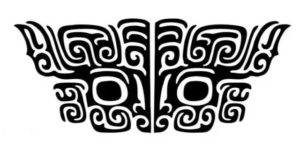The Sassoon Files takes place in the world of 1920s Shanghai. There are two parts of this setting: the historical and the Mythos. This blog post series is about the historical settings… the background which the player characters may know about as they begin their investigations.
This entry is about Zhou Enlai – a major historical figure which controls one of the factions – The Communists – in 1929 Shanghai.

Although Mao Zedong (毛泽东) is referred to as the “founding father” of the People’s Republic of China (“PRC”), it was Zhou Enlai (周恩来) for whom the Chinese people felt genuine affection. Zhou Enlai (周恩来), the first Premier of the PRC, was instrumental in creating the modern state of China. Later in life, as China’s chief foreign diplomatic during the Cold War, Zhou was credited for helping prevent nuclear war with the United States and ending hostilities between China and the Soviet Union. He also worked to mitigate some of the chaos from Mao’s Cultural Revolution. Near his death, he maneuvered to end the political clique that promoted the Cultural Revolution.
Zhou Enlai (周恩来)’s story begins with many similarities to Sun Yat-sen. Zhou was a great student in his youth; a budding intellectual in a family of minor government bureaucrats. He developed a particular passion for drama and the arts, and developed a reputation as friendly and conciliatory. Like many other future leaders of China, Zhou went to study in Japan. In Japan, however, he was discouraged by Japanese racism and militarism and he ran out of money. Upon his return to China, Zhou spent several years as a student and political activist. By day he attended classes and by night he organized protests and revolutionary study groups.
Zhou was arrested for his political activism, and spent 6 months in jail, where he organized communist training workshops. Upon his release, Zhou travelled to Europe to continue his social activism, while attending various universities and working as a foreign correspondent for a Chinese newspaper. Four the next four years, he worked to support and organize revolutionary communist societies in Berlin and Paris, forming many important contacts with communist and left-wing sympathizers in Europe. Notably during this time, he met a fellow exchange student – Deng Xiaoping – whom Zhou hired to run the newspaper’s mimeograph machine.
Zhou returned to China in 1924 to be take a position in the newly formed, Soviet-supported, Whampoa Military Academy, as the Deputy Director of the academy’s Political Department. In that position, he reported to the school headmaster, Chiang Kaishek. Zhou instructed cadets on the political and ideological thoughts of the KMT (国民党), but heavily flavored with communist ideology.
At Whampoa, Zhou was instrumental in placing communists and communist-friendly cadets in key positions throughout the school and the newly growing KMT (国民党) army. In the early days of the academy, communist ideology seemed to compliment the philosophy of national liberation and democracy that was at the heart of the KMT (国民党). However, as the KMT (国民党) gained success in early anti-warlord expeditions, the communist and left-leaning sympathizers within the KMT (国民党) started to come under suspicion. Eventually, Zhou was removed from Whampoa in 1926. Outside of the academy, he continued to recruit people to the communist cause. He organized communist cells in Guangzhou, before moving on to Shanghai.
In 1927, the Northern Expedition, led by Chiang Kai-shek, successfully unified most of China. Chiang then turned on the Communists and initiated the “White Purge”. Zhou Enlai (周恩来), who was in Shanghai at the time, was captured by KMT (国民党) soldiers, but won his release with the help of well-placed allies. Shortly after that, the Chinese Civil War began in earnest. Zhou fled China for two years, first to Hong Kong, then to the Soviet Union, then to parts unknown.
When Zhou Enlai (周恩来) returned to Shanghai in 1929, he returned as a spymaster. Every day, he and his wife traveled between the different jurisdictions of the International Settlement, French Concession and Chinese populated Old Town, never once sleeping in the same bed twice in a row. They wore disguises as sales people, bearded scholar and wife, unwashed laborer and peasant companion. Somehow, Zhou was never caught.
It is fair to say that by the time he returned to Shanghai in 1929, he had changed. Whether that change was a gradual process caused by his involvement with the cause of revolution, or a sudden shift caused by the “betrayal” of Chiang Kai-shek, no one know. Zhou Enlai (周恩来), the handsome, idealistic , and gentle organizer had come to run the “teke” (特科 ) special forces of the Chinese Communist Party. In Shanghai, between 1929 and 1931, Zhou ran intelligence gathering missions against the KMT (国民党), while using the “Red Squad” to assassinate enemy leaders where it could. In return, the KMT (国民党) hunted Communists, looking to find Zhou, the most wanted man in China.
This deadly game happened in the secret meeting rooms, safe-houses, and tea-shops across the various districts of Shanghai. The Green Gang and enemy agents watched the salons and entertainment houses while the Communists watched the streets. Both sides picked off targets where they could, or kidnapped people for torture and interrogation. However, to the average resident living in Shanghai, this conflict may have well been taking place on the other side of the world. The game of cat and mouse was contained in the narrow alleys and tenements of Shanghai, hidden from common view.

